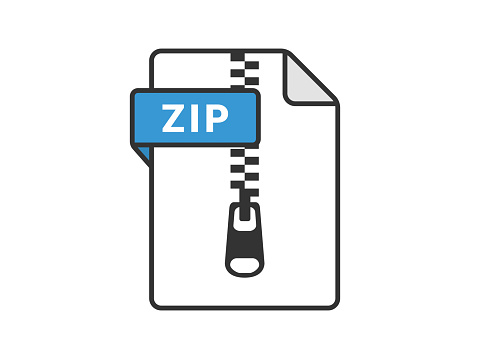Description
Operating Systems
In this assignment, you will simulate various CPU scheduling algorithms. The
efficiency of Operating System depends on two main factors:
• Algorithms used for scheduling; and
• The environment in which this algorithms are implemented.
One of the methods used in evaluation of CPU scheduling algorithms is simulation
on historical logs or samples generated by a random number generator with certain
parameters of processes in a given environment. This is more popular, and random
number generators generate samples using queuing theory and probability theory.
Instructions
Design and implement a simulation program that will allow evaluation of following
CPU scheduling algorithms:
• FCFS without preemption
• SJF without preemption
• Priority with preemption
• RR without preemption.
This program should include the above four algorithms, OR you can use one
program for each scheduling algorithm.
2 Assignment 4
TRU Open Learning
Input data for simulation could be obtained by using SampleGenerator.java. Use the
seven Java files in the Assignment 4 Sample Process Generator Java File Folder
located on your Home Page. SampleGenerator asks to enter:
• Minimum priority (with 0 as the highest)
• Maximum CPU burst time in ms
• Average process arrival interval in ms
• Total simulation time in ms, and
• Output file name
It will generate samples (records of process number, arrival time, priority, and CPU
burst time) and save them in the output file. SampleReader.java could be used to
read samples, and SampleReaderTest.java contains sample codes how to read the
samples from the sample file generated by SampleGenerator.
You need to generate samples for at least 3600000 ms (1 hr).
Your simulation program will generate the followings at every minute for in total 4
different algorithms:
• Average waiting time for the past 10 minutes
• Average turnaround time for the past 10 minutes
Algorithm could be:
// Ready queue is a sort of priority queue: arrival time for FCFS, priority for
Priority, CPU burst time for SJF
// and the entering time into the queue for RR
For (current = 0; current < SIM_TIME; current++) {
If there is no sample process
Read a sample process from the sample file;
If the arrival time of the sample process == current
Put the sample process into the priority queue;
COMP 3411: Operating Systems 3
TRU Open Learning
If there is a running process
If the terminating time of the process == current
Remove the process from the CPU
Else
If RR && the timer expires // RR scheduling
Remove the process from the CPU
Put the process into the priority queue
If Preemptive // Preemptive
scheduling
Get a sample process from the priority queue
Compare the priority
If the priority of the running process on the CPU
is lower
Remove the process from the CPU
Put the process into the priority queue
Dispatch the new sample process to the
CPU
Else
Put the sample process back into the
priority queue
Else
If the priority queue is not empty
Get a sample process from the priority queue;
Dispatch the process to the CPU;
}
4 Assignment 4
TRU Open Learning
Again, the following Java files can be found in the Assignment 4 Sample Process
Generator Java File Folder folder on the HomePage in your course management
system:
• SampleGenerator.java
• SampleReader.java
• PriorityQueue.java
• QueueItem.java
• ProcessControlBlock.java – you can extend this class to keep some
information for your simulation
• KeyboardIn.java
• SampleReaderTest.java
public class SampleReaderTest
{
public static void main(String args[])
{
PriorityQueue readyQ = new PriorityQueue();
ProcessControlBlock pcb;
SampleReader sr;
String sampleFile;
int process, arrival, priority, burst;
System.out.print("Sample File? ");
sampleFile = KeyboardIn.readLineWord();
sr = new SampleReader(sampleFile);
while(true) {
process = -1; arrival = -1; priority = -1; burst = -1;
process = sr.readProcess(); if (process < 0) break;
arrival = sr.readArrival(); if (arrival < 0) break;
priority = sr.readPriority(); if (priority < 0) break;
burst = sr.readBurst(); if (burst < 0) break;
COMP 3411: Operating Systems 5
TRU Open Learning
pcb = new ProcessControlBlock(process, arrival, priority,
burst);
readyQ.putQueue(pcb, arrival);
}
while(!readyQ.isEmpty()) {
System.out.println(readyQ.getHighestPriority());
pcb = (ProcessControlBlock)readyQ.getQueue();
System.out.println(pcb.getProcessNo() + " " +
pcb.getArrivalTime()
+ " " + pcb.getPriority() + " " +
pcb.getCpuBurstTime());
}
}
}
Report Submission Details
You need to submit a report that consists of:
• Short description and analysis of the simulation result
• Java source files
• Two comparison graphs: one for the average waiting time and the other for
the average turnaround time
• Screen shots that show how your programs work.
Assignment Marking Criteria Weighting
Comprehensive, insightful written analysis of simulation result /4
Two accurate and properly labeled comparison graphs – one for average
waiting time; one for average turnaround time (1 mark for each graph) /2
Four algorithms that are developed and implemented into program
correctly /4
No syntax error: All requirements are fully implemented without syntax
errors. Submitted screen shots will be reviewed with source code. /4
Total /14



